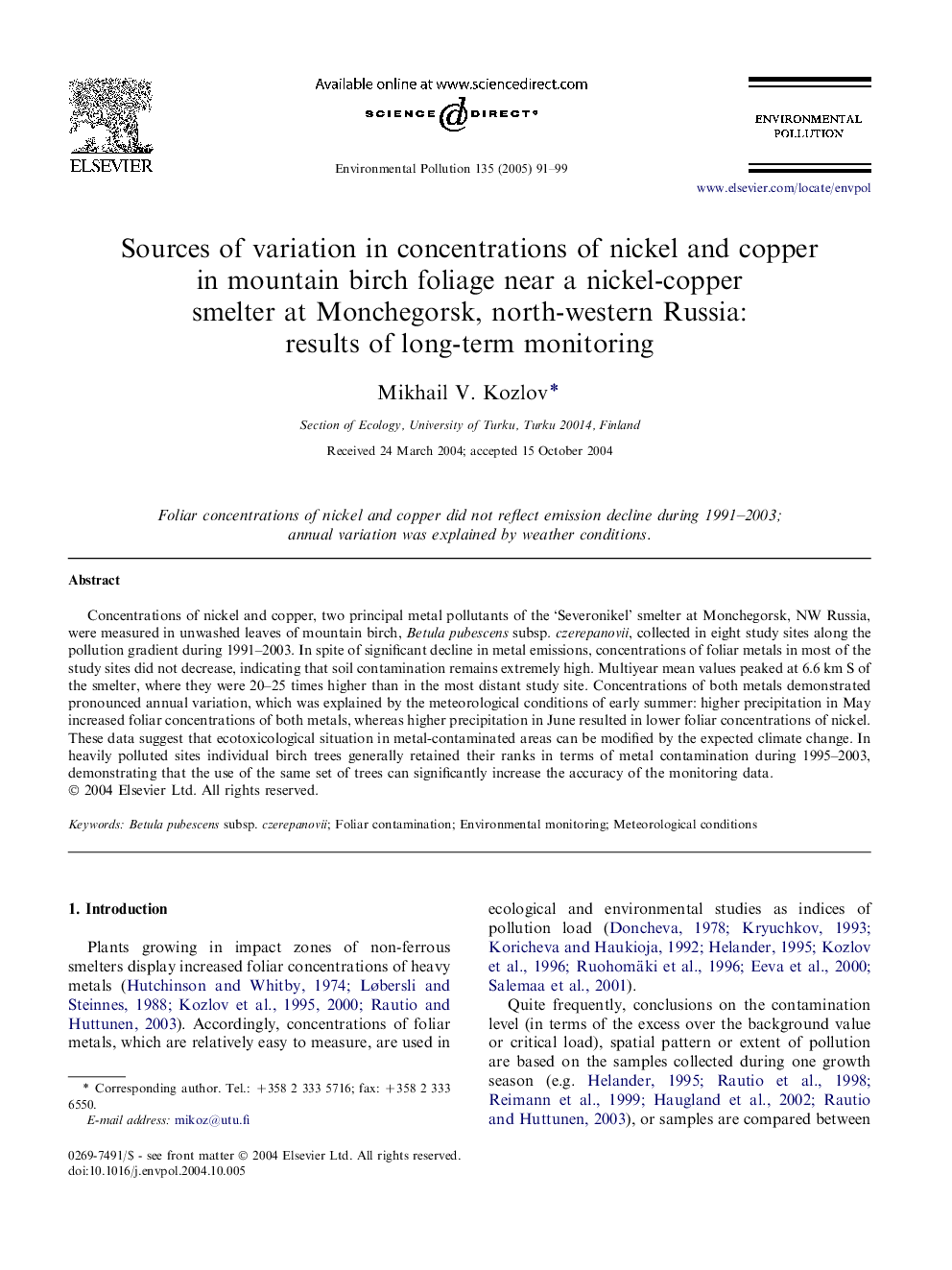| Article ID | Journal | Published Year | Pages | File Type |
|---|---|---|---|---|
| 9456631 | Environmental Pollution | 2005 | 9 Pages |
Abstract
Concentrations of nickel and copper, two principal metal pollutants of the 'Severonikel' smelter at Monchegorsk, NW Russia, were measured in unwashed leaves of mountain birch, Betula pubescens subsp. czerepanovii, collected in eight study sites along the pollution gradient during 1991-2003. In spite of significant decline in metal emissions, concentrations of foliar metals in most of the study sites did not decrease, indicating that soil contamination remains extremely high. Multiyear mean values peaked at 6.6 km S of the smelter, where they were 20-25 times higher than in the most distant study site. Concentrations of both metals demonstrated pronounced annual variation, which was explained by the meteorological conditions of early summer: higher precipitation in May increased foliar concentrations of both metals, whereas higher precipitation in June resulted in lower foliar concentrations of nickel. These data suggest that ecotoxicological situation in metal-contaminated areas can be modified by the expected climate change. In heavily polluted sites individual birch trees generally retained their ranks in terms of metal contamination during 1995-2003, demonstrating that the use of the same set of trees can significantly increase the accuracy of the monitoring data.
Related Topics
Life Sciences
Environmental Science
Environmental Chemistry
Authors
Mikhail V. Kozlov,
